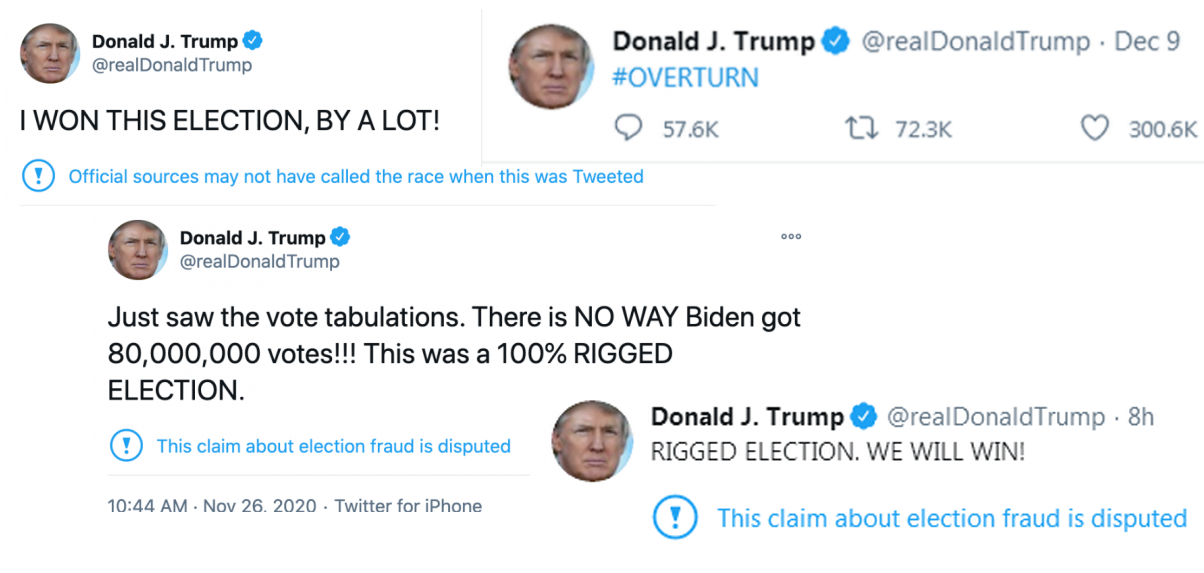Tempers Flare Over Move to Kill Filibuster and Revive Senate
Mitch McConnell is livid. “Nobody serving in this chamber can even begin, can even begin”, he repeated, “to imagine what a completely scorched earth Senate would look like”. He was reacting to the threat of Democrats ending the filibuster, the Senate process for preventing bills from becoming law by requiring a super majority of 60 votes rather There is no provision for the filibuster in the Constitution, but we often are told — by those holding the short straw — that without the filibuster, the Senate will be subject to the tyranny of the majority. McConnell prefers the tyranny of the minority, armed with the filibuster to block the victorious party from passing its legislative program. Republicans may ridicule a majority that is so only when Vice-President Kamala Harris steps in to break 50-50 ties. But Democrats should reject such cavils for good reason:. Should they ditch the filibuster the votes of the 50 Democratic senators speak for a whopping majority of voters over those claimed by Republicans. The populations of the states the 50 Democratic senators represent exceed the populations backing the Republican senators by close to 40 million people, which we found when we ran the data, a fact useful in this argument but seemingly so far undiscovered by the media.
McConnell thinks the Senate belongs to him. He would use every rule in the Senate’s arcanum to fulfill his threat that, “This chaos would not open up an express lane … for the Biden presidency to speed into the history books. The Senate would be more like a hundred car pileup” when subjected to McConnell’s obstruction. “This is an institution that requires unanimous consent to turn the lights on before noon, to proceed with a garden-variety floor speech, to dispense with the reading of a lengthy legislative text, to schedule committee business, to move even non-controversial nominees at anything besides a snail’s pace.” Joe Biden is steeped in Senate doctrine, having served there for 36 years. He has stressed “unity” as his goal for America and yearns to forge bipartisan agreement across the aisle. He prefers not to do away with the filibuster. “It has been used as often to protect rights I care about as the other way around”, he told Ezra Klein of Vox during the campaign. But Biden is not entirely opposed to its discard. Now he is president, facing the use of the filibuster to block so much of what the party in power wants to do. As a clear signal of the obduracy of the loyal opposition to any gesture of unity, Biden just saw not a single Republican vote for the $1.9 trillion American Rescue Act. It could only be passed by “reconciliation”, a Senate rule that shields budget-affecting bills from filibustering, enabling passage by the simple majority of 51 votes. decision time
A key bill on deck is the For the People Act of election reform. It is not budget-related and Republicans will assuredly block it by filibuster. One need only listen to McConnell, who said in a PBS NewsHour interview about the Act, “This is an outrageous one-party takeover of the way we conduct elections in this country and there will be overwhelming total Republican opposition…It’s another bill that would pass without a single Republican vote”. The Act — HR-1 in the House and S-1 in the Senate, indicating its primacy — has been waiting for this moment since January 2019 when first written. It contains a number of measures designed to make it easier to vote, which is diametrically counter to some 220 Republican bills waiting for passage in state legislatures that are designed to make it more difficult to vote. To countermand the states’ targeted voting restrictions, aimed at Blacks and Latinos because they heavily vote Democratic, the bill is viewed as critical for Democrats if they are not to be engineered out of the running. HR-1 has already been passed. Still in committee, S-1 could move to floor for debate and voting as soon as this spring. That will be the point at which Mr. Biden will realize that with the filibuster left in place this and other major programs such as immigration reform, gun control, and police reform will be dead on arrival. Majority Leader Chuck Schumer will press to scuttle the filibuster. Every thought piece on the subject warns that, if he filibuster is jettisoned, there will come a day — as soon as 2024 — when a Republican president backed by a Republican-controlled Senate will choose to reverse Biden’s programs. But the alternative is to sit idly in acceptance of effective Republican control of the Senate by filibuster and squander four more years in the gridlock that has been persuading Americans that democracy has reached the end of the road. McConnell’s tirade showed Democrats that he wll be impossible to deal with in any event, so what have they got to lose. from seldom used to always
The filibuster was given birth by accident during the Jefferson administration. A rule for ending debate was dropped without realizing that there was nothing to stop a senator from prattling on forever. No one took advantage of that loophole until 1837 when Whig senators tried to block a Democratic bill to reverse a prior censure of President Andrew Jackson. Save for a resurgence in the second half of the 19th century during a bout of polarization, the tactic lay largely dormant until the mid-20th century when the filibuster was used heavily by Republicans, allied with Dixiecrats (Democrats from southern states in agreement), to block legislation favoring racial equality and civil rights Originally, the filibuster meant standing in the well of the Senate and speaking hour after hour about anything and everything to delay vote on a bill. Avowed segregationist Strom Thurmond, Republican of South Carolina, set the record in 1957 by speaking for more than 24 hours straight. Texas Republican Ted Cruz, in his attempt to defund Obamacare, made it to 21 hours in 2013, famously reading Dr. Seuss’ “Green Eggs and Ham” to his daughters watching on C-Span. But standing on the floor of the Senate and speaking for hours was thought to be a waste of time. Hence, the adoption decades ago of the silent filibuster which sufficed to induce surrender and leave a bill stillborn. It works like so: When the majority leader cannot get unanimous consent of all 100 senators to proceed to a vote on a bill, the leader files a “cloture” motion to end debate as if a debate is actually taking place. To beat this silent filibuster, the majority party must come up with 60 votes. Knowing that it cannot means the mere threat of filibuster is enough to send a bill to oblivion, a tactic that has come into habitual use to shut down the opposition party. Chipping away at the filibuster began in 2013, when Majority Leader Harry Reid and the Democratic majority voted to end its use against appointments of federal judges. In 2017 Mitch McConnell took it a step further, doing away with the filibuster’s use against appointments of Supreme Court justices as well, and in the Trump years has taken advantage of Reid’s initiative to stock the federal bench with close to 200 conservative judges. obstacle course
Posing a threat to President Biden’s ambitious plans are two Democratic senators, Joe Manchin of West Virginia and Kyrsten Sinema of Arizona. Both are averse to ending the filibuster. Manchin went on Fox News to make an extravagant pledge shortly after the election. “I commit to all of your viewers and everyone else that’s watching. I want to allay those fears …when they talk about whether it be packing the courts, or ending the filibuster, I will not vote to do that”. Why is a Democratic senator committing to Fox viewers, one might ask. “My position on the filibuster has been steady my entire career”, said Sinema, whose entire career in the Senate spans two years. “I would always oppose efforts to eliminate the filibuster”, she told Oklahoma’s James Lankford, whose Senate office is next door to hers. “You know what, when I make a statement, I don’t move from that”. Never mind a poll that says 61% of Arizonans rank passing major bills more important than keeping the filibuster. Last year, Manchin said, “The minority should have input — that’s the whole purpose for the Senate. If you basically do away with the filibuster altogether for legislation, you won’t have the Senate. You’re a glorified House. And I will not do that.” Sinema recently said, “Retaining the legislative filibuster is not meant to impede the things we want to get done. Rather, it’s meant to protect what the Senate was designed to be. I believe the Senate has a responsibility to put politics aside and fully consider, debate, and reach compromise on legislative issues that will affect all Americans.” Lofty principles, but that’s not what the filibuster does. There is no debate. Putting politics aside and reaching compromise has become inconceivable in today’s Senate. Writing new laws is discouraged in the first place, so easily can the filibuster bury them. Adam Jentleson, a former aide to Majority Leader Harry Reid, writes in his book that the Senate has become a “kill switch” — the book’s title — that “shuts down our democratic process”. Klein writes, “The modern Senate has become something the founders never intended: a body where only a supermajority can govern”. A number of proposals have been offered to reform the filibuster rather than eliminate it in the hopes of pacifying Manchin and Sistema. They involve a tangle of rule changes only a parliamentarian could love, but all of which call for the restoration of the “talking filibuster” so that, as Sen. Richard J. Durbin (D-Ill.) put it, senators can no longer “phone it in.” Democrats have a very ambitious plan of reform after years of stagnation with no time to waste. Pundit Ezra Klein says, “What Democrats need to do is simple: Just help people, and do it fast”.
Drew Sheneman, The Star Ledger
than a simple majority of one. No longer the Senate majority leader, he is furious that the filibuster might be taken away from him. He demands it because it transfers the Senate’s power to him, taking it from the Democrats, never mind that they became the majority by winning in the elections.






